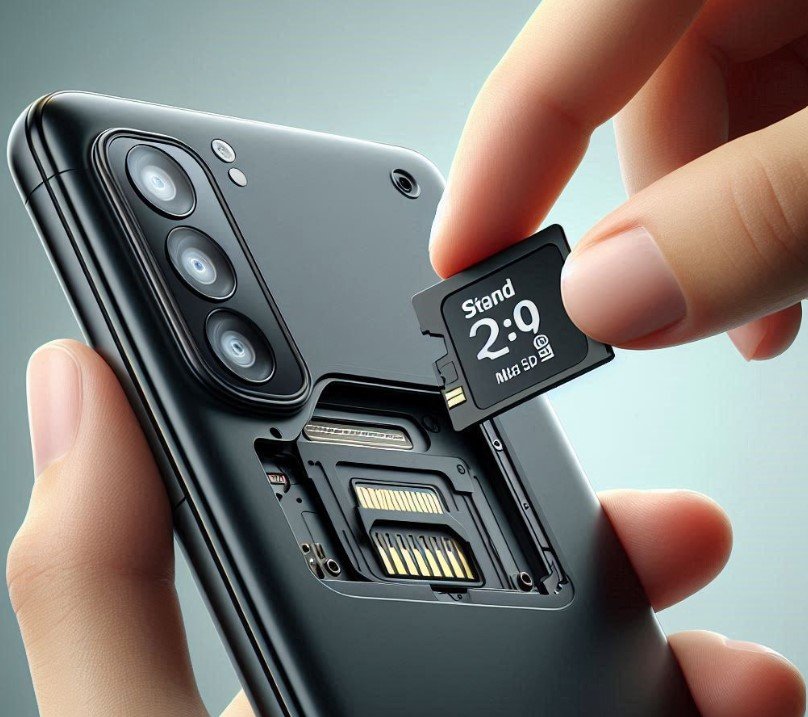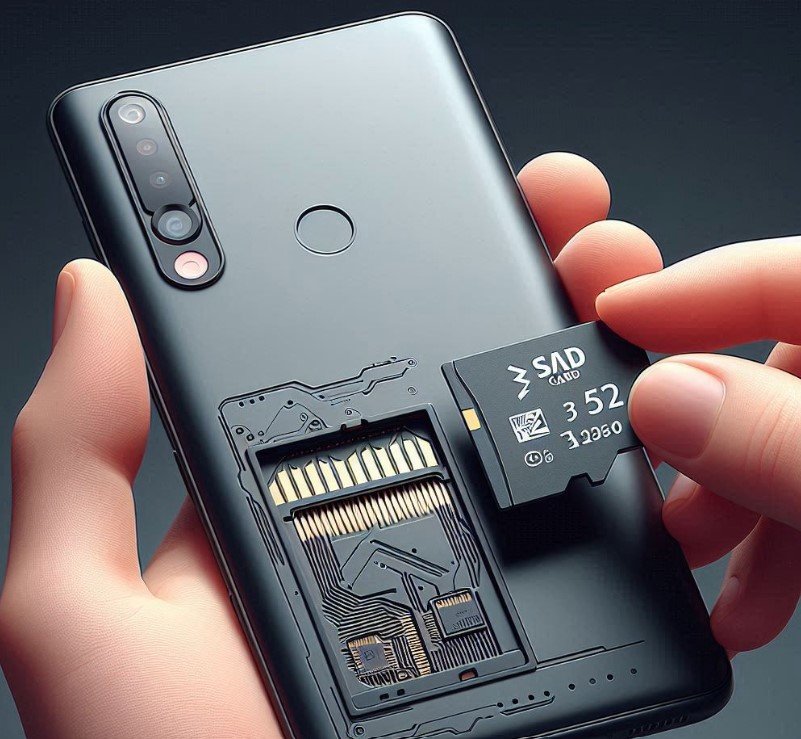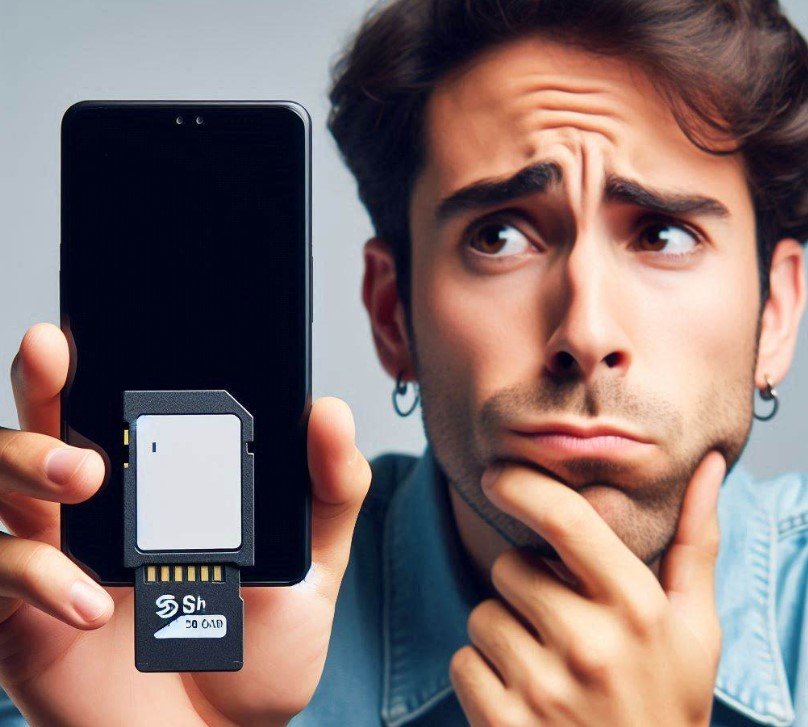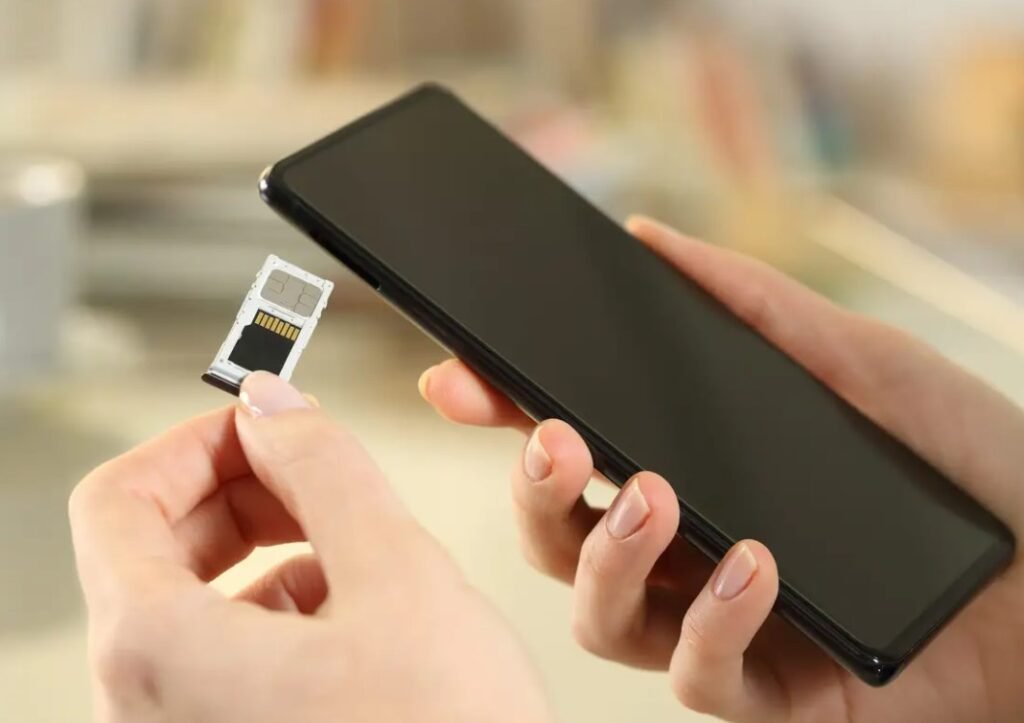What Does Unmount SD Card Mean? [All You Need To Know]
This article will explain What Does Unmount SD Card Mean? A common term you’ll hear about SD cards is “unmount.” It is important for everyone who uses SD cards on their phone, camera, etc. This article will explain what unmounting an SD card involves, why it’s important, and how to do it correctly.
Secure Digital cards, or SD cards, as they are more commonly known, are used to increase the amount of storage space in many devices including cell phones, cameras, and tablets.
They let users keep more stuff not just contacts, but pictures, videos, music, documents, and apps, without messing up. But this extra storage comes with some responsibility, like knowing some processes, like how to unmount the SD card.
What Does Unmount SD Card Mean?
Unmounting is simply the technical term for disconnecting an SD card from your operating system with the proper safety procedures. That way the system will stop trying to access the card so you can take it out without losing data or screwing up the device. Which is a necessary part of dealing with external storage especially when you take the card out of the machine.

What Does Mounting & Unmounting SD Card Mean?
Mounting and unmounting an SD card is a process. The process makes the card’s storage available or unavailable to the device. This device can be a smartphone, Camera, or computer.
Mounting SD Card
Mounting the SD card allows the device to access the card. With this in place, the device can read that card. It approves the device to allow you. You can view it. You can also transfer data to or from the card. The device can also save Data on the card. Essentially mounting is the Process of connecting the SD card to the device you do this so that it becomes usable
Unmounting SD Card
Unmounting an SD card is a method to disconnect it safely. This occurs without physically removing it. This method prevents data loss and corruption. It makes sure all processes involving the card are completed. This is before it is removed.
It is a good idea to unmount the card before removing it from your device. This step protects the data stored on the card. The process disconnects the SD card from the device. It makes the Storage unavailable to the device.
Should My SD Card Be Mounted Or Unmounted?
If your SD card is mounted or unmounted that depends on your situation. Ensure mounting when use is necessary. Also, maintain unmounting when not in use. Do this when the card is removed.
Mounted SD Card
- Use the tool to access SD card files. This is for specific scenarios.
- Employ for file transfer with SD card.
- Used with applications that save data on SD cards.
Unmounted SD Card
- Use when there is no SD card.
- It’s important when a card is absent from the device.
- Also, when storing cards for prolonged periods is under consideration.
Why It’s Important To Unmount SD Card Properly?
You might wonder, what is the big deal about unmounting and why is it so important? Even though unmounting only takes a few seconds, missing the step before physically removing the SD card can cause permanent damage. You must be unmounted properly your SD card to avoid these problems:

- Loss of Data: This only happens if you do not make use of this option; hence it is very important because you are sure that all the data has been saved and written down, thus minimizing chances for loss or corruption.
- File system corruption: By unplugging, small errors or even large ones on the file system can be avoided.
- Data corruption: Inconsistency in file names has been prevented hence protecting information from being corrupted.
- Physical Damage: By ejecting safely during unmounting one can avoid any physical damage to the card or device itself.
- Inconsistent Behavior: When properly used unmounting guarantees consistency in performance and behavior between a device and its SD card (for example HP All-in-one Desktop).
- Reduced Risk of Viruses: One way of preventing viruses or malware from accessing your PC is by unplugging it whenever it gets connected to an internet connection (especially if you’re not sure about its source).
- Preserve SD Card Health: The lifespan of an SD memory card can be increased if it isn’t used too much and is properly unmounted every time.
Do You Really Have To Unmount An SD Card Before Removing It?
To avoid physical damage, which is a common cause of corruption, you can choose to never remove an SD card. If you only have two SD card slots, you can choose one to be your primary card and never remove it. Remember to unmount your SD card.
- Cache flushing: Most gadgets will flush their cached data to the SD card before it is removed.
- File system journaling: Almost all file systems (FAT32, exFAT, NTFS) are journaled to keep a log of changes, and to recover from interruptions.
You should unmount the SD card before disconnecting it if one of these occurs.
- You’re transferring large files or making significant changes.
- You’re using an older device or operating system.
- You want to ensure maximum data protection.
What Will Happen If I Unmount My SD Card?
Unmounting is the easy but necessary step that disconnects the card from your machine so that your information is not lost when you take the card out of the computer.
Whether switching cards or being cautious, understanding the effects of unmounting can help you avoid potential data loss or corruption. If you unmount your SD card:
- Data protection: Plus u won’t have to worry about losing any files or corrupting data or anything.
- Inaccessibility: Then your device won’t use the storage in the SD card anymore.
- No data transfer: Can’t read, can’t write, can’t move files to and from the card.
- Safe removal: You can take your SD card out of your machine and not have to worry about losing information.
- No power consumption: Your device will no longer be losing power to the SD card.
Should I Eject/Unmount My SD Card Before Restarting/Turning Off My Phone?
Curious whether you should eject or unmount your SD card before restarting or turning off your phone? No, you do not have to do that. You only eject or unmount the card when you are planning to remove the card while the phone is still turned on.

As much as that may seem like a good idea, your device is made to safely eject the SD card while doing these things. Knowing how the phone handles the SD card on restart/turning off will give you the peace of mind that your data is secure without having to take any additional steps. To be safe, always eject/unmount your SD card before:
- Restarting your phone
- Turning off your phone
- Removing the SD card
You never have to eject or unmount your SD card before you restate or turn off your phone because the phone takes care of that for you. And make sure that no apps are using the SD card at the time of these actions to preserve data integrity.
How To Recover Data From An Unmounted SD Card?
Trying to recover some data from an unmounted SD card is a terrible experience especially when that SD card has important files and memories stored on it. If it is because of some kind of system error, improper ejection, or physical damage, then your card has become unmounted, but the good news is that your data can still be recovered. If you want to recover data from an unmounted SD card, follow these steps:
Reinsert the SD card
Insert the SD card back into your machine or card reader.
Check for visibility
Make sure your device or computer recognizes the SD card.
Try Using File Recovery Software Like
- Recuva (Windows)
- PhotoRec (Windows, Mac, Linux)
- EaseUS Data Recovery Wizard (Windows, Mac)
- Disk Drill (Windows, Mac)
Scan the SD card
Run the program and have it search the SD card for any files that can be recovered.
Select and recover files
Select the files you wish to restore, and let the program do the rest.
Save recovered files
Then save those saved files to another location such as your hard drive or a floppy disk. Remember, data recovery success depends on:
- How soon do you attempt recovery after unmounting?
- The type of files you’re trying to recover.
- The condition of the SD card.
Recovering data from an unmounted SD card is possible with the proper techniques and tools. If you follow these steps you will greatly increase your chances of recovering your files and getting your card to work again.
How To Recover Data From Improperly Ejected Or Unmounting SD Cards?
If your SD card keeps unmounting from your camera or Android device, it may be logically damaged. Or maybe you physically ejected the SD card without realizing it and lost data and corrupted files.
How do you retrieve files from an unmounted SD card anyway in either case? The solution is to use Data recovery software to recover data.

There are many SD card recovery programs out there but this tutorial will use disk drill. It is so easy to use, even though it has all of these high-tech features (Disk Drill).
It also makes it easy to recover data from SD cards, micro SD cards, SDXC cards, and SDHC cards. If you are a Windows user you can take advantage of Disk Drill’s free trial and recover up to 500 MB of data without a license. To recover files from an unmounted SD card using Disk Drill:
- Download and install Disk Drill.
- Connect the unmounted SD card to your PC.
- Open Disk Drill, choose the SD card, and press Search for lost data.
- Click Review found items to see the recoverable files. Or select the type of file you would like to recover (pictures, videos, audio, documents, archives, etc.).
- Under the Expand the Existing section or Lost or Deleted section (whichever you want to recover files that were already on the SD card or ones that were lost/deleted. You can expand both options.
- Select the files you wish to recover. Disk Drill provides a preview of each selected file. After verifying, click Recover.
- Choose a recovery destination and click Next.
- Disk Drill will continue recovering your data from the unmounted SD card.
Remember to regularly back up your data to prevent future losses and ensure that your files remain safe and accessible.
How To Mount Or Unmount SD Card?
When you mount and unmount your SD card, it is an easy but very important process of mounting and unmounting your SD card to prevent your data from becoming corrupted. It is very important to properly manage your SD card because it will then ensure the safety and integrity of your data. Here are the steps to mount or unmount an SD card on different devices:
Android Devices
- Mount: Insert the SD card into the device. Go to Settings > Storage > Mount SD card.
- Unmount: Go to Settings > Storage > Unmount SD card.
Windows Devices
- Mount: Insert the SD card into a card reader. Windows will automatically mount it.
- Unmount: Right-click the SD card in File Explorer > Eject.
Mac Devices
- Mount: Insert the SD card into a card reader. MacOS will automatically mount it.
- Unmount: Or the button that says eject next to the SD card in the finder or right-click> eject.
Linux Devices
- Mount: Insert the SD card into a card reader. Type sudo mount /dev/sdx1 /mnt (except use the actual device name for the SD card).
- Unmount: Sudo umount /mnt (or sudo umount /dev/sdx1).
Other Devices (e.g., Cameras, Tablets)
Refer to the user’s manual or settings menu on the device for the correct method of mounting and unmounting the SD card..
How To Mount An SD Card On Your Android Device?
It is very easy to mount an SD card on your Android Device.
- Start by inserting the SD card into the SD card slot on your Android phone or tablet.
- Power on your device.
- Open Settings and navigate to Storage > SD card.
- If needed, click on Format to reformat the SD card. Don’t forget to save any important stuff off of the SD card before reformatting.
- After formatting, click on Mount SD Card so that it is ready to use.

The correct way to unmount the SD card on an Android device is to go to Settings>Storage and click the Eject icon beside the SD card. This will securely dismount the card so that you can physically take it out without losing any data.
How To Eject An SD Card Properly?
To eject an SD card properly. Follow the following steps:
- Ejecting an SD card properly ensures that your data remains safe and prevents potential corruption. Here’s how to do it:
- Open Settings: Access the Settings app on your device.
- Select Storage: Go to Storage or Device Care (whichever your phone is).
- Locate the SD Card: Find your SD card listed under the “Portable storage” section.
- Unmount the SD Card: Click on the SD card and select Unmount or Eject. And wait for the little message that says it’s ok to take the SD card out.
- Remove the SD Card: Unmounted, then pull the SD card out of the slot delicately.
By doing this you will ensure that you properly eject your SD card and won’t lose any information due to your carelessness.
Conclusion
In summary, What Does Unmount SD Card Mean? So the answer is SD card is essential for anyone who uses external storage in their digital devices. Unmounting is a crucial step that ensures your data remains safe and your device operates smoothly when removing an SD card.
Frequently Asked Questions
How do I eject an SD card on my Android?
To unmount an SD card on an Android device, go to Settings Storage, locate the SD card, and tap the Eject or Unmount option. Wait for the confirmation message before removing the card.
How can I make my SD card unmount?
If your SD card won’t unmount, ensure that no apps or files are currently using the card. Try closing all apps and stopping any background processes that might be accessing the SD card. If it still won’t unmount, then reboot your machine and try it again.
What is this “Mount” thing in my settings for my SD card?
Mount” is the option in the SD card settings that permits your machine to link to the SD card and use it. This option appears when you have just inserted or reinserted an SD card that has been unmounted.
Can I use the SD card while it’s unmounted?
No, when an SD card is unmounted, it is not accessible by the device. You will have to remount the SD card to use it.
How do I really know that my SD card is unmounted?
After selecting the unmount option, your device should display a message confirming that the SD card is safe to remove. Also, your SD card will not show up anymore in your device settings under storage.






